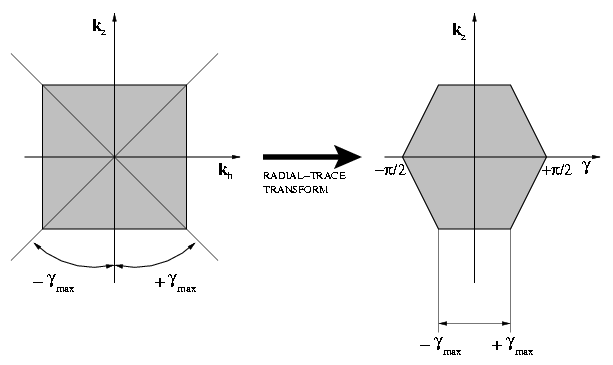




Next: Limited temporal frequency bandwidth
Up: Sources of inaccuracy
Previous: Sources of inaccuracy
One of the main sources of amplitude error is the finite bandwidth of the
depth (kz) and offset (kh) wavenumbers (Figure 4).
We apply RTT in the Fourier domain using Equations (20).
In practical terms, this transformation
amounts to a horizontal stretch of kh at constant kz.
However, since kz and kh are limited in range, we can correctly
evaluate the angle transformation only within a finite angle range
( ). The maximum angles to which our transformation
is correct is a function of image sampling on offset and depth
(Figure 4).
). The maximum angles to which our transformation
is correct is a function of image sampling on offset and depth
(Figure 4).
 can be evaluated from the data, but cannot be modified during
processing. We simply need to be aware of it and limit our analysis to
the proper angle range.
khband
can be evaluated from the data, but cannot be modified during
processing. We simply need to be aware of it and limit our analysis to
the proper angle range.
khband
Figure 4 Truncation of the depth and offset wavenumber
bandwidths limits the range over which we can compute angle-gathers.
A kz-kh offset-gather (left panel) is transformed by RTT to a
 angle-gather (right panel).
angle-gather (right panel).  is the maximum angle
for which the RTT is not affected by truncation of the kh bandwidth.
is the maximum angle
for which the RTT is not affected by truncation of the kh bandwidth.






Next: Limited temporal frequency bandwidth
Up: Sources of inaccuracy
Previous: Sources of inaccuracy
Stanford Exploration Project
4/30/2001

